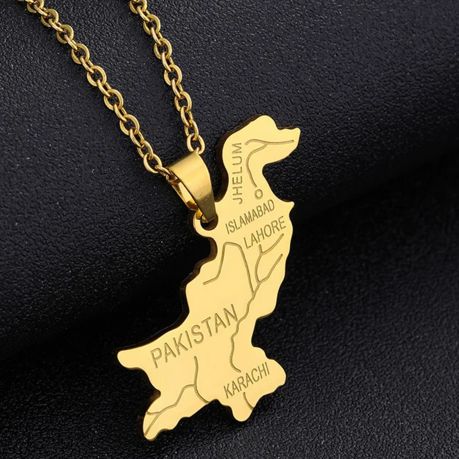Cricket in Pakistan: a national passion
Cricket is much more than just a sport in Pakistan. It is a true passion that unites the entire country. From packed stadiums to lively discussions in cafes, cricket is omnipresent in the daily lives of Pakistanis.
The importance of Pakistani players
Pakistan has a long and rich history in international cricket. The national team has won many prestigious titles, including the World Cup in 1992 and 2009. Pakistani players are known for their talent, passion and fighting spirit. They are among the best players in the world and inspire generations of young talents.
Booming salaries
In recent years, salaries of Pakistani players have seen tremendous growth. This trend is due to several factors, including outstanding individual performances of players, their growing popularity and increased demand in international cricket leagues.
A fascinating insight
In this article, we will explore in detail the reasons for this increase in salaries. We will analyze the factors that contribute to the success of Pakistani players and examine the impact of this trend on domestic cricket.
A journey to the heart of Pakistani cricket
So, whether you are an avid cricket fan or simply curious about this fascinating sport, embark with us on a journey to the heart of Pakistani cricket and explore the world of the country's most talented and highest-paid players.
The masters of the game: the top 5 highest paid Pakistani players
Pakistani cricket is full of exceptional talent, and some players stand out with extraordinary salaries. Let's discover together the top 5 highest paid Pakistani players:
1. Babar Azam: The undisputed king of Pakistani batting. Captain of the national team and ranked No. 1 in the world in ODIs, Babar Azam is a true cricket maestro. His impeccable technique and striking power make him an essential player and a valuable asset for his team.
2. Shaheen Afridi: The young bowling prodigy. Shaheen Afridi took the cricketing world by surprise with his blazing speed and devastating yorkers. Already considered one of the best bowlers in the world, he is only 22 years old and promises an extraordinary career.
3. Mohammad Rizwan: A talented batsman and an excellent wicket-keeper. Mohammad Rizwan is a complete player and a pillar of the national team. His consistency and fighting spirit make him an indispensable element of Pakistani success.
4. Hasan Ali: A fast bowler capable of taking key wickets at crucial times. Hasan Ali is an unpredictable and formidable player who can change the course of a match in a few moments.
5. Fakhar Zaman: An explosive batsman known for his spectacular power shots. Fakhar Zaman is a real danger for the opposing team and capable of scoring runs quickly.
The secrets of their success
But what explains the exorbitant salaries of these players?
Individual performances: There is no secret, the highest paid players are those who perform best on the pitch. Their impressive statistics and their impact on the team's results make them coveted and valued players.
Popularity and attractiveness: Cricket is a sport followed by millions of people around the world. Star players, like those in the top 5, become stars and attract sponsors and fans. Their brand image and influence on social networks contribute to their market value.
Demand in International Leagues: Lucrative cricket leagues like Pakistan Super League (PSL) and Indian Premier League (IPL) compete for the best players. This competition between leagues drives up the prices of players at auction.
Role in Pakistan National Team: Key players of the national team, like the captain and star players, have an important responsibility and a major impact on the success of the country. They are therefore naturally more valued than other players.
The impact on Pakistan cricket
The increase in salaries of Pakistani players has a definite impact on domestic cricket:
Benefits :
Development of domestic cricket: High salaries attract young talents to cricket and contribute to the professionalization of the sport in Pakistan.
Motivating Young Players: Star players are role models for younger generations and inspire them to excel in cricket.
Disadvantages:
Salary inequality: The gap between the salaries of star players and those of other players can create tension and frustration within the team.
Player price inflation: Increased demand for top players can drive up transfer prices and make it difficult for less wealthy teams to sign talented players.
In conclusion, the salaries of the highest Pakistani players reflect their exceptional talent, popularity and importance to domestic cricket. This trend has its pros and cons, but it is clear that Pakistani cricket is booming and its talented players will continue to shine on the international stage.
Pakistan cricket at the dawn of a new era
Summary of key points
Cricket is a national passion in Pakistan and Pakistani players are among the best in the world.
Salaries of Pakistani players have seen tremendous growth in recent years.
Factors contributing to this increase include individual performance, popularity, demand in international leagues and role in the national team.
Salary increase has both positive and negative effects on Pakistan cricket.
Future prospects
It is difficult to predict the future trend of salaries of Pakistani players. However, several factors indicate that the upward trend is likely to continue:
The popularity of cricket continues to grow across the world, which will increase the demand for talented players.
International cricket leagues, like the PSL and IPL, will continue to invest heavily in the sport, driving up player prices.
Pakistani cricket is booming and its players have the potential to win many titles in the years to come.
A promising future
In conclusion, the salaries of the highest Pakistani players reflect the talent and potential of domestic cricket.
As Pakistani cricket enters a new era of success and prosperity, it is clear that Pakistani players will continue to play a leading role on the international stage.







